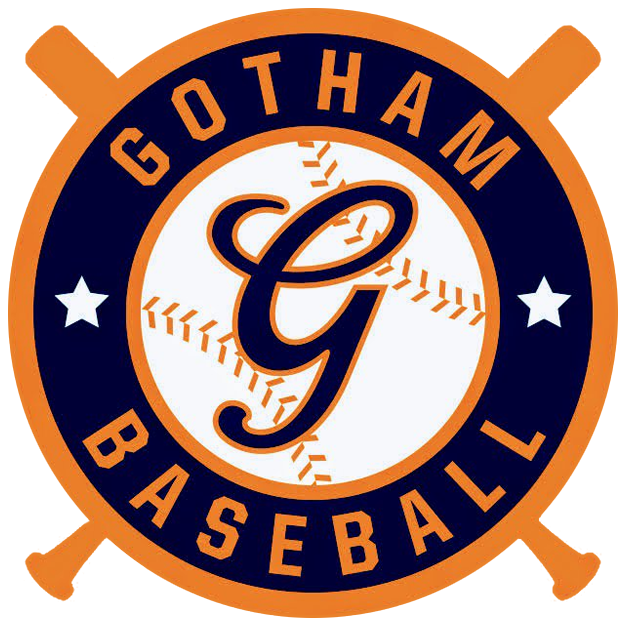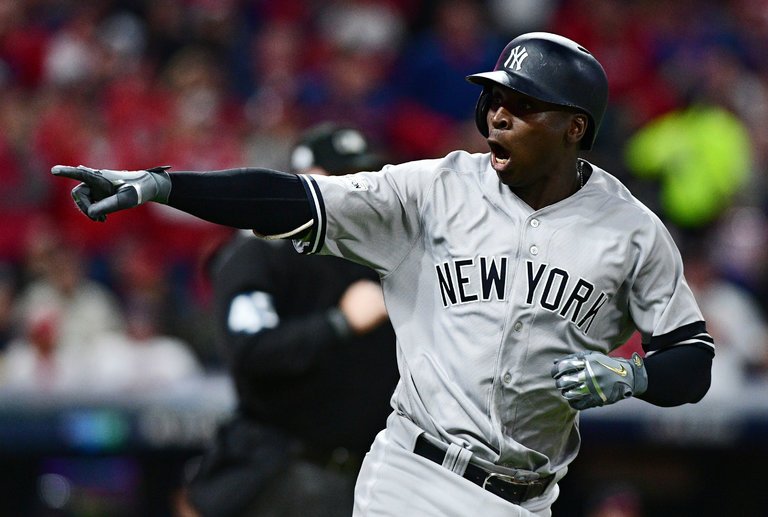FanGraphs Steamer says that Gregorius will hit about .248/.310/.366 with 12 doubles, six homers, and an 88 wRC+ in 146 games. That would be just fine for his first year in pinstripes. – Pinstripe Alley, Dec. 2014.
Talking about exceeding expectations.
With just days before pitchers and catchers report to Spring Training, Didi Gregorius is about to begin his fourth season as the New York Yankees shortstop. Pending any last minute moves, the soon to be 28 year old will be the senior member of the Yankees’ infield. Even if a veteran is brought in to fill either second base or third base, Gregorius will be the most tenured infielder on the roster. While that speaks to how young and flexible Brian Cashman has built the Yankees, it also speaks to the importance of Gregorius as he must provide stability on an everyday basis.
Based on his track record and personality, the shortstop position is in good hands for 2018. In past years, it would be a foregone conclusion that Gregorius would be the Yankees’ shortstop for the foreseeable future. But, Major League Baseball has changed. If Gregorius wants to remain in New York, he will have to do the same.
As important as the left-handed hitting shortstop is to the Yankees, his 2018 performance may have more meaning for him. With one more year of arbitration eligibility, Gregorius enters the season quite possibly playing for his Yankees’ future. That seems a bit far-fetched, but given the potential free agent market and the depth of the Yankees’ system, it is not unreasonable to see the Yankees parting ways with Gregorius in 2019 or allowing him to leave via free agency in 2020.
The significance of pending free agent Manny Machado moving to shortstop in 2018 should not be lost. Machado, entering his age 25 season, will be the premier free agent on the market next winter. Much can change in a year; the Orioles could make a surprise move and sign their best player to a long-term deal (unlikely) or Machado could struggle at shortstop and have more value as a third baseman. But, given the inherent match between Machado and the Yankees, there is more than a possibility of Manny Machado playing on the left side of the Yankees infield in 2019.
There is also the possibility that Gregorius gets usurped by Gleyber Torres, generally ranked as the Yankees best prospect. Torres, in competition for the second base or third base job heading into Spring Training, is a shortstop by trade. If he proves that he can handle Major League pitching during 2018, there is a chance that he takes the shortstop job in 2019, given Gregorius’ rising arbitration cost and the low cost of having the younger Torres play that position. With the Yankees’ desire to stay under the luxury tax threshold, they could save $10 million with that type of decision. Where Machado and/or Torres could play might depend on Gregorius’ growth during his age 28 season.
Didi Gregorius has improved each day since he arrived to the Yankees’ organization in the December 2014 three-team trade involving the Tigers and Diamondbacks. With the unenviable task of replacing Derek Jeter as the Yankees shortstop, Gregorius plowed through a rough start. The raw 25-year-old had never held an everyday job during his tenure in Arizona, playing in 183 games over the course of two seasons at multiple positions. Given his lack of playing experience and still underdeveloped approach at the plate, a slow start was to be expected.
Unfortunately, for him, that slow start happened.
Given his recent success, it is easy to forget the outcry from fans and mainstream media for the Yankees to move on from the young shortstop during the early part of the 2015 season. When he limped out to a .206/.261/.238 April, the calls were loud. When he only modestly improved in May with a .232/.300/.341 line, the calls grew louder. Reminiscent of Tino Martinez hearing Don Mattingly chants during his first couple of months, Gregorius received little fan and media support. Early defensive struggles led to even more questions about whether or not Gregorius could handle the job.
Three years later, all of that seems a bit ridiculous. He would finish 2015 with a strong second half, batting .294/.345/.417 over his last 74 games along with 12 doubles, 2 triples, and 5 home runs. That second half performance would carry over to 2016 as he would pair with Starlin Castro to provide one of the most stable and reliable keystone combinations in Major League Baseball. Gregorius would appear in 153 games and hit .276/.304/.447 with 32 doubles, 2 triples, 20 home runs, and 70 RBI. It would be the best offensive output from a Yankees’ shortstop since Jeter’s 2012 season. But, there was a negative to Gregorius’ breakout 2016 season. Defensively, he posted a minus-9 defensive runs saved mark, ranking him 21st among the 24 qualified shortstops.
Despite the defensive lapse, Gregorius entered the 2017 season with high expectations. In a period of two seasons, he overcame the Jeter comparisons and forged his own identity as an everyday player in the Major Leagues. 2017 didn’t start as hoped as Gregorius injured his shoulder during the World Baseball Classic, causing him to miss the first month of the season.
But, when he returned, he immediately became one of the Yankees’ most consistent players. In 136 games–42 out of the cleanup spot–Gregorius posted career bests in home runs (25), RBI (87), batting average (.287), and slugging percentage (.478). Even more importantly, he bounced back from that poor defensive season in 2016 to post a +1 DRS, ranking 11th among qualified shortstops.
There is no doubt that Gregorius is improving at the plate, despite such an aggressive approach. Last season, he swung at 58.2 percent of all pitches he saw. In comparison, the league average is 46.5 percent. That elevated swing rate is a product of swinging at pitches outside of the zone at a 40.8% (league average: 29.8%) and swinging at pitches that are strikes at an 81.7% rate (league average 66.7%).
That level of aggressiveness works because he does have an above average ability to make contact, posting an 80 percent contact rate, compared to a 76 percent league average. While such an aggressive approach could lead to prolonged slumps or putting too many bad pitches in play with poor contact, thus far it has not hurt Gregorius. His career .288 BABIP is just below the league average of .300, meaning his batting average isn’t a product of luck. And, he hasn’t had wild fluctuations with the type of contact he’s made. Obviously, this approach leads to extremely low walk rates, but his contact skill has helped him avoid high strikeout rates, posting just a 12.3 percent strikeout rate in 2017, compared to the league average of 21 percent.
Along with his aggressive approach, Gregorius has seen an incremental decrease of his strikeout rate, which, as already stated, is quite low. He’s also become more of a pull hitter, pulling the ball at a 40.3 percent rate last season, up from 38% and 37% from the previous two seasons. He has also made an effort to hit the ball in the air as evidenced by his rising flyball rate, which has increased every year in pinstripes from his 2015 mark of 34 percent to his 2017 mark of 43.8 percent.
But, that doesn’t mean his approach comes without risk. An overly aggressive hitter is prone to prolonged slumps and extremes in production. His on base percentage will always be tied to his batting average. If there is ever an extreme uptick in poor contact or he begins to make contact with too many bad pitches, there is no elite skill to really to fall back on. While the developing power from the shortstop position is positive, it is not an elite skill. He is a good power hitter for a shortstop, but he will never be mistaken for an elite power hitter. The Yankees don’t necessarily need Gregorius to be a power hitter given their lineup. They need him to be a quality left handed hitter in a lineup that predominately is right handed power. He filled that role last year, but there will need to be a bit more refinement in his approach as he ages. Aging players don’t gain bat speed. Aging players continue to produce because they refine their approach. This isn’t an issue for 2018, but Gregorius will have to give some sort of hint that he is capable of that evolution.
This winter’s hot stove has proven one thing. The League’s top executives are not handing out long term, big money deals to players who are past their prime or have little ceiling left. The game is no longer paying players for what they have done. A few years ago, a 30 year old shortstop coming off of five solid years of production would garner a big money deal in free agency. But, that is no longer the case. But, Gregorius will be that 30 year in just two winters from now.
Right now, Didi Gregorius is a good player in the right lineup at the right time. He has above average contact skills and has developed some power. He handles himself well and has worked hard to establish himself as a consistent, reliable regular over the past three seasons. 2018 looks to be the ideal year in the ideal lineup for the 28 year old.
But, he is not an elite defender. He is not an elite home run hitter, nor does he get on base at an above average rate. His three seasons as a Yankees’ regular have been great. His fourth one will likely be great as well, again, considering the lineup he is in. That won’t be enough to guarantee that he will be back in 2019. That won’t guarantee him a long term deal in 2020 from the Yankees or anybody else.
For the Yankees, there is a superstar who is three years younger who may be available next winter as a free agent. And, there is an elite prospect already on the team who may prove more well rounded for far less of a cost. It may sound cold, but the business of baseball is often cold. Either option is will likely replace Gregorius in 2019.
That is, of course, unless Gregorius does what he has done since he’s come to New York—adapt, evolve, develop, and survive. That seems unlikely, but it also seemed unlikely back in 2015 to envision that Gregorius would be the most tenured, most important member of the Yankees’ infield in 2018. He proved everyone wrong in 2015. Maybe, he can do that again. If he does, the 2018 Yankees will be better for it. And, Didi Gregorius’ future will be much more secure, whether in New York or elsewhere.

